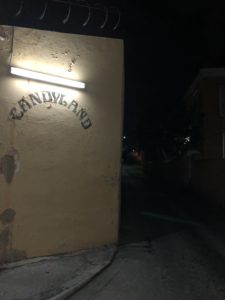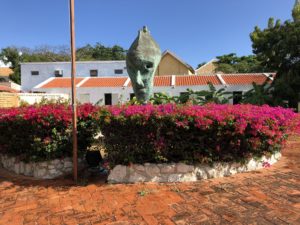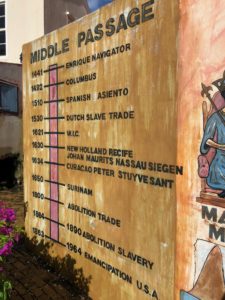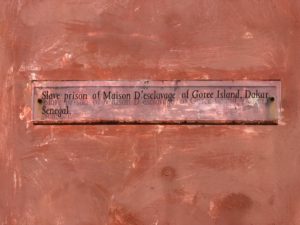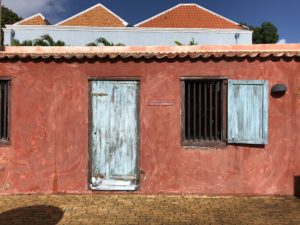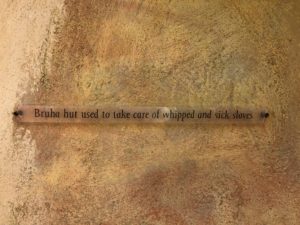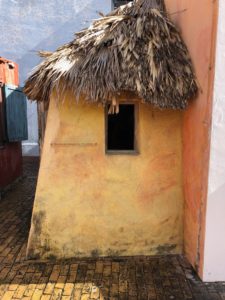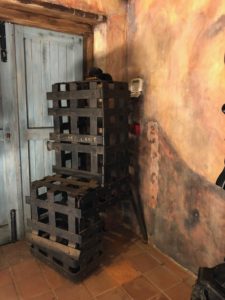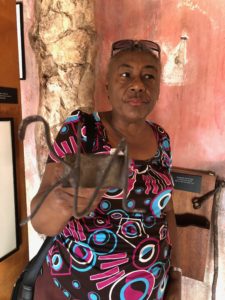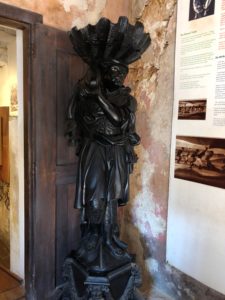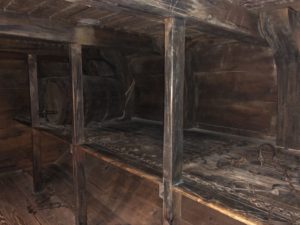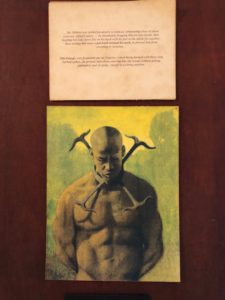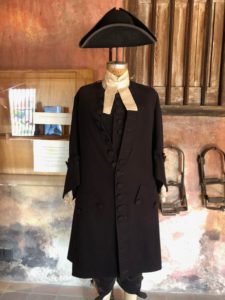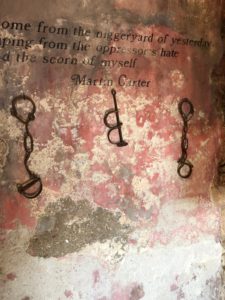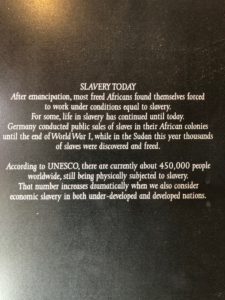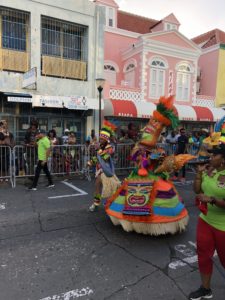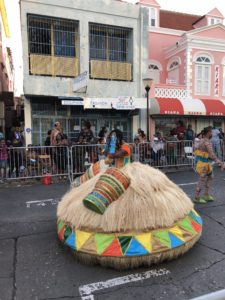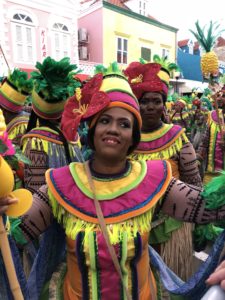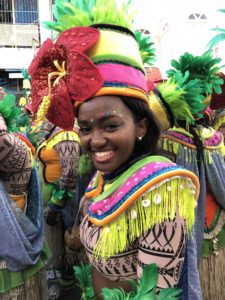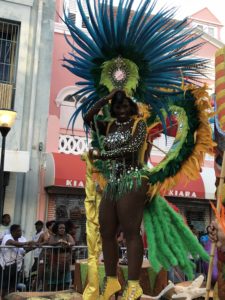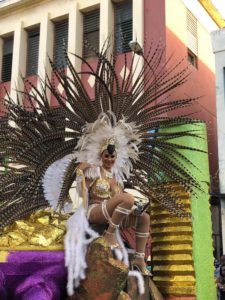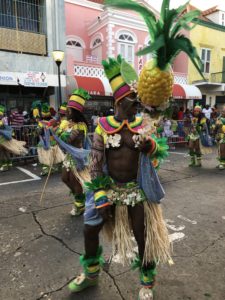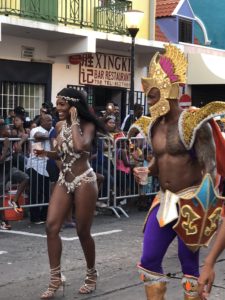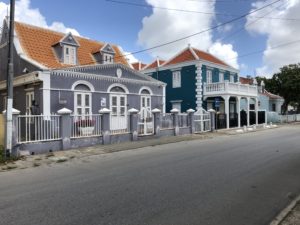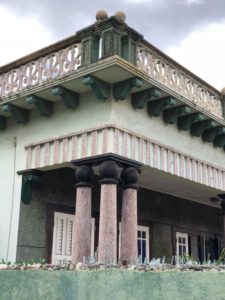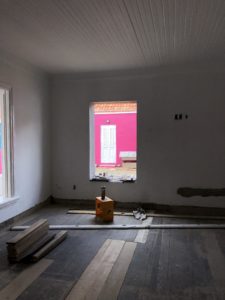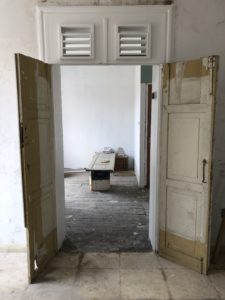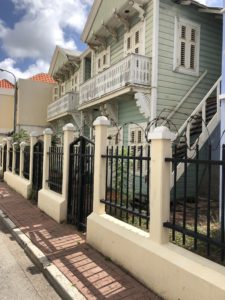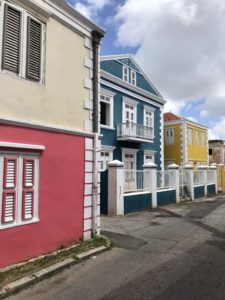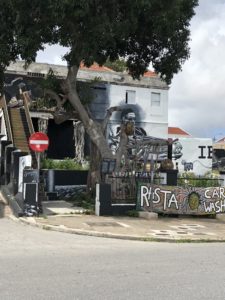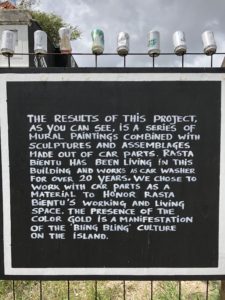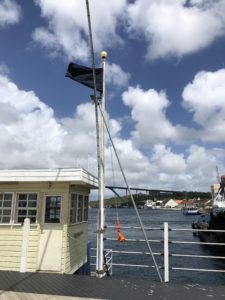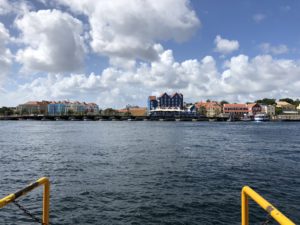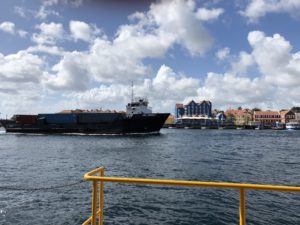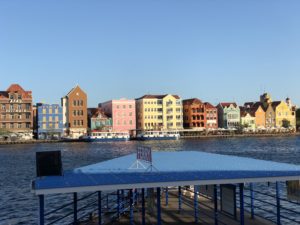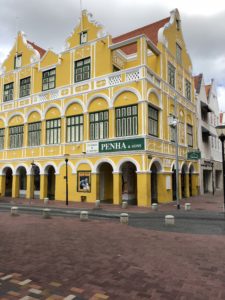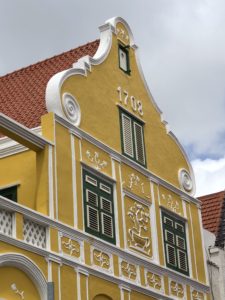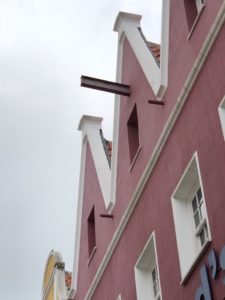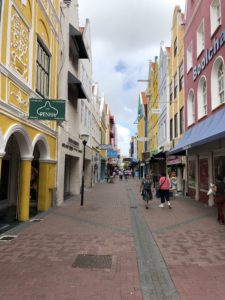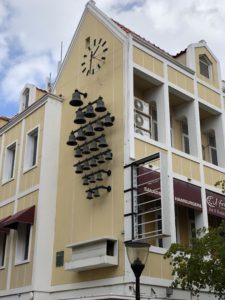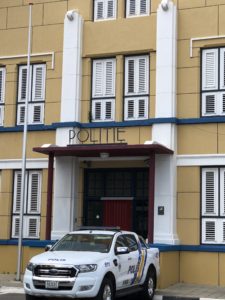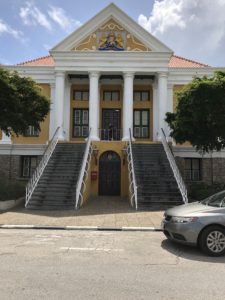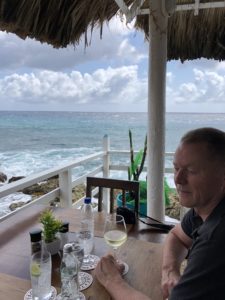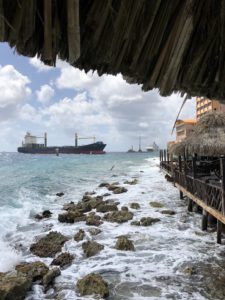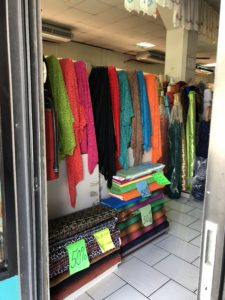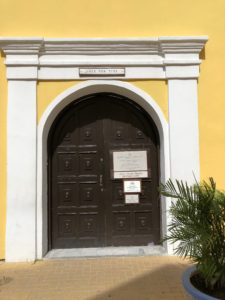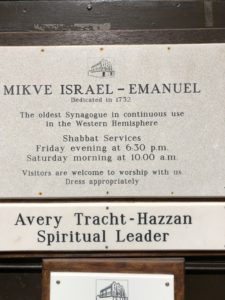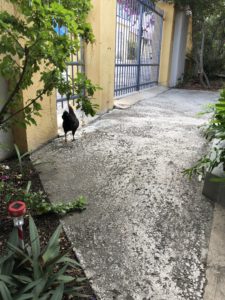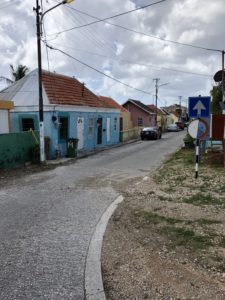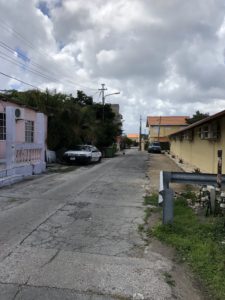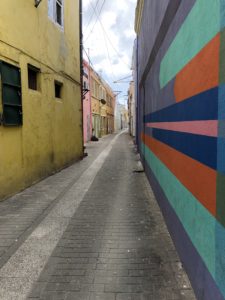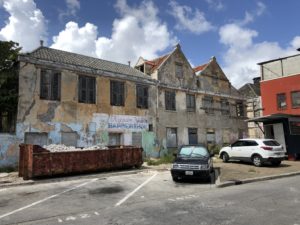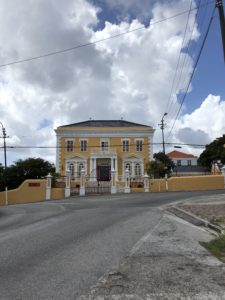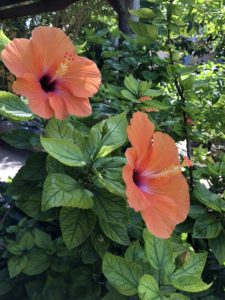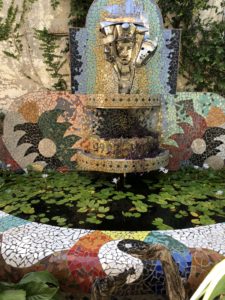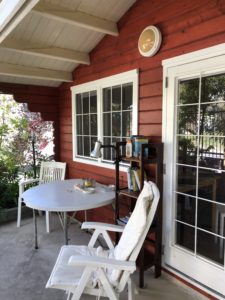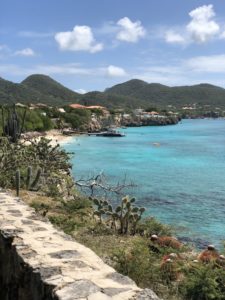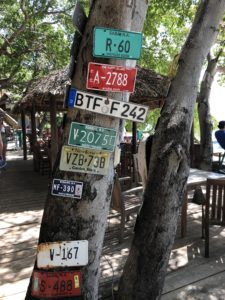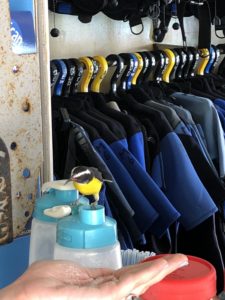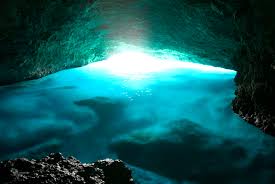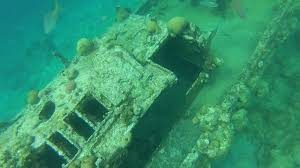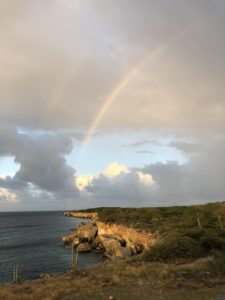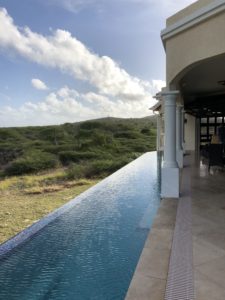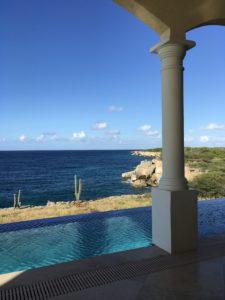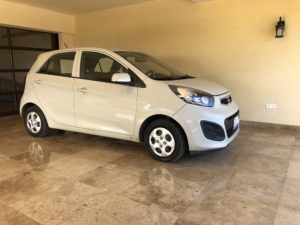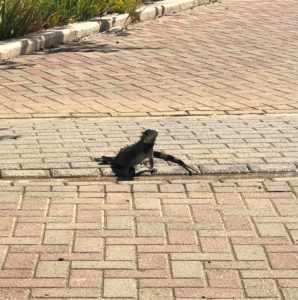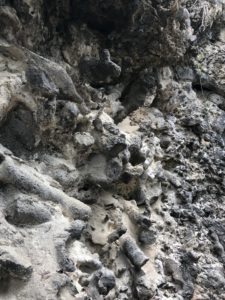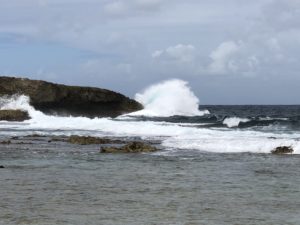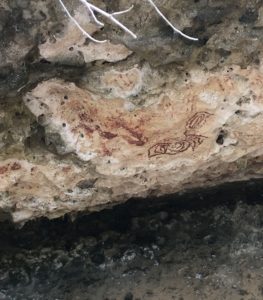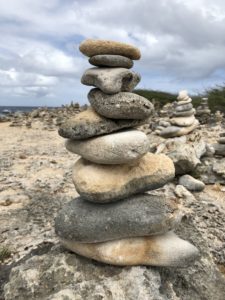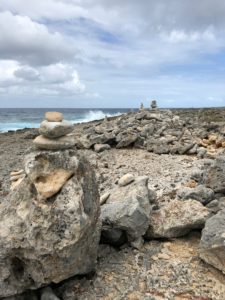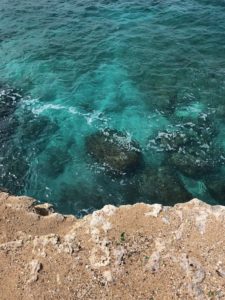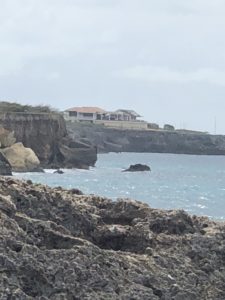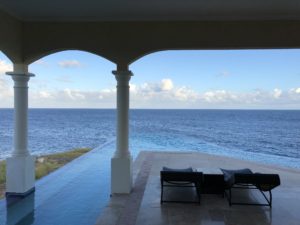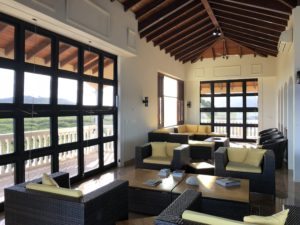Monthly Archives: February 2018
Kura Hulanda Museum
Houses painted in colors washed with my blood; fragments of heart under the icy sun of mid day.
Charles Carrere
Little did we know that yesterday was one of four Curacao holidays, “Carnival Monday”. Streets were empty and everything, everything was closed. So this morning we hightailed over to the Kura Hulanda Slave Trade museum.
From the origin of man to West African empires…..
…… Through the middle passage to the Americas
Museum Kurá Hulanda is an anthropological museum that focuses on the predominant cultures of Curacao. It offers a world-class chronicle of the Origin of Man, the African slave trade, West African Empires, Pre-Colombian gold, Mesopotamian relics and Antillean art.
What a shocking experience. My exposure to the horrors of slavery are through the lens of an American experience. What happened on our soil. I was un-informed about slave trade which the Dutch used to profit from 500,000 human beings.
The Entrance courtyard
A Time Line of the Middle Passage
Once through the courtyard were a compound of buildings housing the exhibits. The buildings themselves, artifacts.
Slave prison of Maison D’esclavage of Goree Island, Dakar
Bruha (witches) hut used to take care of whipped and sick slaves
As we were departing, we were stopped by one of the employees, Yflen Florentina, she asked if we had seen certain items, some of which we had not. She grabbed us and took us on a whirlwind walk, talking all the time and providing incredible narrative that brought pieces of the collection into stark and vivid reality.
Here she holds a brand used to identify a human being as the property of a “master”.
Venice was a slave trading hub and the origin of the “Blackamoors“
The hold of a slave ship.
”. . . Mr. Ebbers was indeed peculiarly tyrannical, tormenting a boy of about fourteen, called Cadety, . . . by alternately flogging him for one month, then keeping him laid down flat on his back with his feet in the stocks for another than making him wear a pot-hook around his neck, to prevent him from escaping or sleeping . .”
According to Yflen, the Catholic church derived profit from the trade as well by insisting owners pay the church to grant priesthood to one slave who would then baptize the “savages” into the church. Here the robes of a slave priest.
These manacles were used to chain one arm to the opposite foot. Inscription reads –
“I come from the niggeryard of yesterday leaping from the oppressor’s hate and the scorn of myself.”
And it keeps on going (click to enlarge)
Curacao Carnival
What can you say except “a picture is worth a thousand words”.
Strongly encourage you click on photos to see full pixels
A Walk Through Willemstad
After a long morning sipping coffee, we headed out to walk Willemstad. First a stroll through our neighborhood, Otrabanda, and the many blocks of restored Dutch Colonial homes. Otrabanda, the harbor, and, Punda the neighborhood across the harbor, are listed as a UNESCO World Heritage Site. Here are some restored Otrabanda homes. As always, click on pics to enlarge.
A Pair in Gray and Ink Blue
Italian Influence, Once a Composers Home
Some in the Midst of Revival
Or Keeping Out an Eagle Eye
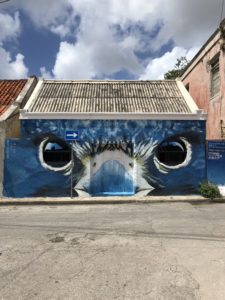
Full of Filigree
Coral, Ink Blue, Goldenrod
Then others, the result of an Art Project, “Rasta Car Wash”
From Otrabanda we cross the harbor on the Queen Emma pontoon bridge to Punda. The bridge swings open and closed on a hinge positioned on the Otrabanda shore, powered from a motor on the Punda side. The bridge house flys a blue flag for a “full open” of the bridge which takes 30 minutes and allows tankers and large ships to enter, and orange, a “half open”, for small pilot boats. Here is the flag pole next to the captain’s bridge house. Blue up, orange down and vice-versa.
Here is a view from Punda of a “full open” bridge awaiting passage of a container ship.
After the ship slips through, the bridge slowly pivots back.
Once in place, the flexible but firm locking mechanism is testament to Dutch engineering.
Punda is home to the famed line of Dutch buildings, a picture on every Curacao website.
Even the Dutch architectural appendage to move furniture in and out of buildings is present in Curacao.
Punda is lined with small streets, home to mostly junky shops and the occasional high-end diamond store.
There are also small surprises like this clock with exposed bells.
Closer to shore, government buildings line the streets. Here the Politie, just an extra “I” from being “Polite”. And the multi-party Parliament building.
We found a great seaside spot for lunch and watched this tanker make its way into harbor.
An after lunch walk through Punda with vivid Curacao fabrics.
We wound down our day hoping to see the Mikve Israel Synagogue, the oldest operating in the Western Hemisphere. Unfortunately, vacation mode made us lose track of days and we didn’t realize it was Saturday and they were closed. It’s on the list for Monday.
Tomorrow is Carnival, who knows what we’ll see.
Alarm Clock
If we practice finding beauty today, we’ll find twice as much beauty tomorrow. If we work on forgiveness today, tomorrow we may be free of resentments.
I am working on forgiving the rooster who stopped by very early, announced his presence, and then strutted off, the cock of the walk.
Piercing the Willemstad Labyrinth
Welcome to Willemstad, that is if you can locate your accommodations. Equipped with Google Maps and the best of intention, we still ended up at a structure bearing the word demencia in its name. I quickly understood their services when I asked for directions and had to be buzzed through a locked entrance. Willemstad is old, very old. Our neighborhood, Otrabanda is considered the “newer” section having been established in 1707, filled with winding streets many no more than a one-way alley. Living quarters are small, with decaying exteriors but still bearing color washes of the Caribbean. Everyone lives behind a wall.
Narrow streets filled with Afro-Dutch locals give way to crumbling buildings sidled next to restored structures.
I took a walk to the local market to pick up coffee and happened upon the Queen Emma pontoon bridge swinging open.
Our quarters are deep in the hood with an enclosed courtyard sporting some lush tropical flora and fauna.
We have a few days here and will share our explorations of the World Heritage sights.
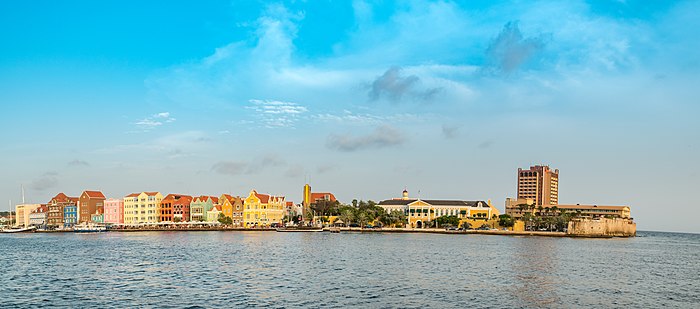
Terra Firma/Terra Mare
This post is a day late but hopefully not a dollar short. We were without electricity for a good portion of the morning and afternoon yesterday. The internet link went down but never came back on even though the electric found its way to our home. Ying/Yang of being in a beautiful, remote location.
Yesterday, the major activity was a walk on terra firma to the dive shop for a snorkeling excursion terra mare.
The dive shop was your typical, thatched roof sandy hut with a few license plates posted for good measure.
The kind helpful folks on duty provided the goggles and fins and demonstrated that a bird in the hand is worth two in the bush.
Then after the ever so important “roll-call” (done at the end of each dive to ensure no one left behind), we were off to the boat.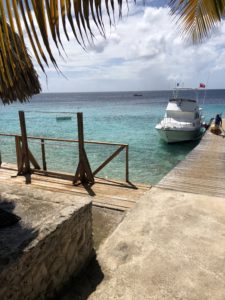 .
.
The two-hour excursion took us to three different dive sites. One, the Blue Room accessible only by diving under the cliff edge and into a domed cave carved out of the bluff.
The next stop was a shipwreck with its propeller still in place, quickly being homesteaded by brain coral.
The last stop was in a shallow bay, home to several fishing boats. After their morning catch, the fisherman clean their bounty in the bay and toss the resulting chum overboard gladly eaten by a group (family?) of sea turtles. By nature, the turtles are vegetarian and do not act as predators but when a meal is prepared and served up like delivery from GrubHub, they happily partake. Two of them seemed to befriend me and we floated together synching in rhythm, up and down, surfacing for a turtle gulp of air. We swam together for about 15 minutes, just turtles and me. At one point their backs were close enough to touch, so close I could see detail of their exquisite shell markings. My emotions swirled as we swam, effortless and buoyant, so grateful they agreed to share their habitat with humans. I think it must be the same feeling one has seeing the lion or elephant on the Serengeti – but in the Mare, the sea turtle.
To top all of this, we had a friend fly in proving that a bird in the kitchen may have a better snack than the bird in the hand.
The Pot at the End of the Rainbow
First is the faith of a pot that is turned upside down. This pot can’t receive anything that is poured into it.
Second, we have the pot with holes in it. This one will be able to gather whatever is poured into it, but only temporarily.
Third is the pot that is right side up. It collects and retains all that it receives.
–Buddhist Teaching
Good Morning
Good morning, or as they say in Papiamento, “Bon dia”. I wake every morning and the first thought of the day is gratefulness. My touchstone is a simple bracelet that says, “Liver Transplant, July 20, 2017, Call 312-695-8900”. Those few words encapsulate what I am grateful for. A donor who did not go gentle into that good night, the date I was transformed from certain death to life, and a telephone number where those on the other end of the line are most likely creating another miracle at this moment. Much to be grateful for. And here I am relishing the gift of beauty, nature, peace, and friendship. To me this is “icing on the cake” grateful.
A Day of Exploration
This morning started with a late breakfast then taking our Kia Picanto (described in advertising as “urban, fun and energetic by nature” when the reality is the opposite) for a not-so-brisk trek to discover another side of Curacao.
Exiting our compound, we almost took out one of the abundant native species. While they are crawling all over, we don’t see many this large I think due to their complete negligence of looking both ways before crossing the street.
Our first stop was Christoffel Park, the largest national park in Curacao just east of our house in Sabana Westpunt. In one national park, all the varied topography of Curacao seems to come together, ocean, beach, mountains and scrub. The lands used to be Plantation Savonet, one of the first established on the island and prosperous from the labors of 242 slaves. Here, a pastoral view of remaining buildings contradictory of the historic horrors inside.
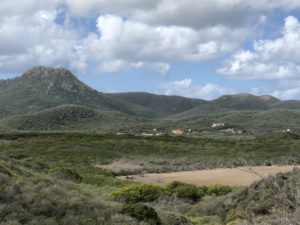
Dropping the Picanto into low gear we slowed our way down to oceanfront and took a beachhead trail that was a lesson in complex Curacao geology. Fossil, limestone and petrified coral outcroppings?
As best I can understand, there were complex damn systems that trapped high tide waters, then evaporation facilitated the salt harvest.
Then on to the most important purpose of the day, the ancient Indian drawings 4,900 years old, now fenced off from tourists who previously took advantage by carving their initials alongside.
Dropping the Picanto into fourth gear, we sailed toward home but passed the entrance home and take a look at the “Blue Hole”, a section of coastline where ocean has chewed its way through rock to create an entire plumbing labyrinth that oozes seawater into land. Here is a powerful example of the forces at work.
To celebrate this wonder visitors have taken to stack rocks to depict the water spouting out the ground.
The stacks seem to go to infinity.
And here is the name sake Blue Hole, completely separated from shoreline.
Looking down from the cliffs we were treated to a view of the famed “Caribbean blue” waters
Treading on, we were treated to a view of our house opposite that depicted in today’s opening photo. Our house from the “Blue Hole Cliffs”.
Signing off for today. After all this, tomorrow may need to be spent in repose or floating in the pool.
Sitting on an island far away from home.
This view from our house perched on the western edge of Curacao peers directly toward the United States 1,188 miles away. It’s been said that absence makes the heart grow fonder. Today, that is not the case. I’ve always been eager to travel “abroad”. Immersing oneself in a foreign culture and language demands that you let go of ingrained notion, thought, and cognitive interaction. Our brains become addicted to imprinted perspectives of language and cultural norms. When you move away, those tools of daily existence are rendered useless, the perspective ceases to provide benefit. A forced freedom from daily (un) comfort. Not merely “punching out” but intentionally disassociating from the toxic trashing that has replaced American social etiquette.
So here is the opportunity, the shamatha, the reprieve.
“If you can take your troubles as they come, if you can maintain your calm and composure amid pressing duties and unending engagements, if you can rise above the distressing and disturbing circumstances in which you are set down, you have discovered a priceless secret of daily living. Even if you are forced to go through life weighed down by some unescapable misfortune or handicap and yet live each day as it comes with poise and peace of mind, you have succeeded where most people have failed. You have wrought a greater achievement than a person who rules a nation.”
A moment of ocean waves and trade winds to ponder.
Here, the morning light warms our pavilion.
I’m sure we will set out on Curacao explorations including the world heritage site of Willemstad during the coming days. But for now, just poise and peace of mind.
